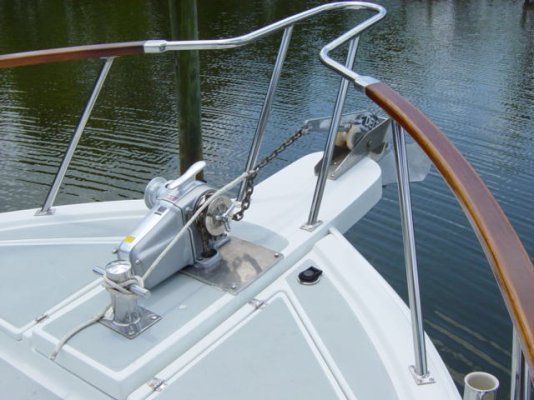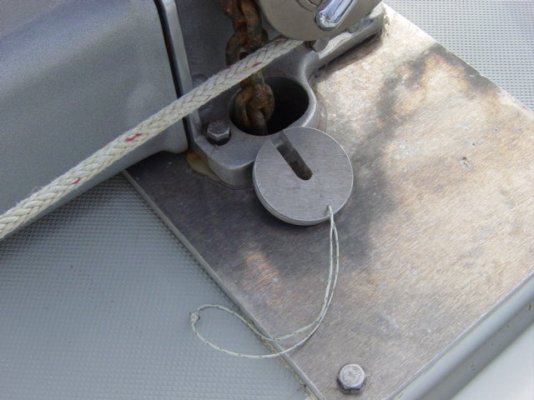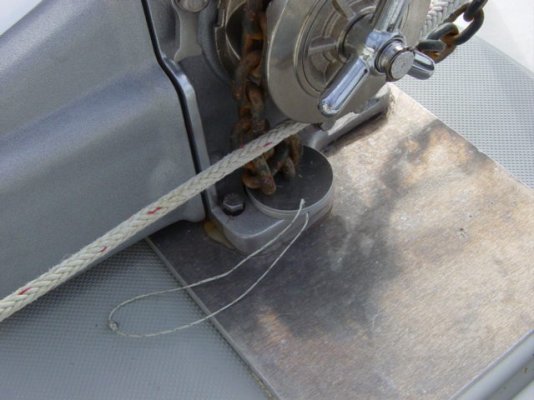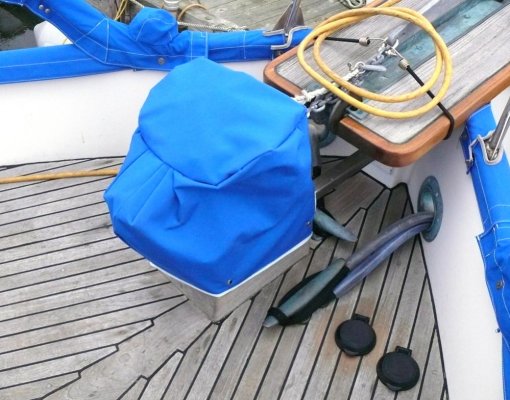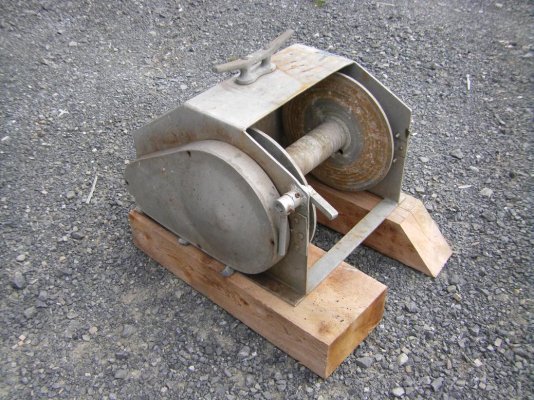Marin, I think your windlass cleat would be plenty strong enough for any anchoring you would probably do in the next 10 years. And I'll bet your winch is fastened to the foredeck as securely as your anchoring cleat on the deck.
We prefer a v-bridle snubber to a single line snubber so securing one of the snubber lines to the windlass cleat would actually be an awkward setup as opposed to each line coming through a bow hawse and to a deck cleat right there.
The windlass and teak mounting block are secured with long bronze rods threaded at each end. The rods run thorugh the windlass base, a base plate I had made by PYI, the laminated teak block, the deck and a pair of heavy stainless backing plates under the deck. The whole works is "sandwiched" together with the fasteners on both ends of the four bronze rods.
In addition we had a heavy stainless brace fabricated that connects the front of the teak block to the heavy angle brace that supports the back end of the pulpit. This prevents the block from "leaning" forward under the weight of deploying or retrieving the anchor.
When we bought the boat the original windlass was secured the same way with four rods but the backing "plates" were thin teak strips and there was no forward brace. As we learned when we were checking out the boat in California prior to the sea trial and surveys, when the anchor was pulled in there was enough play in the windlass/block mounting that the back of the block would lift up off the deck by a quarter inch or so. We corrected that after taking delivery of the boat--- that's when we had the forebrace made up--- but the new windlass is secured much more solidly now.
But we still don't put any significant strain on the windlass or pulpit when setting or breaking out the anchor. We put that load on the deck cleats. And once we're at anchor, there is still no load on the pulpit or windlass since the snubber lines are secured to the deck cleats. There are no leverage issues with the deck cleats where there would be with the cleat on top of the windlass.
But you're probably right, the thing is probably plenty strong enough for what we do. But since we don't need to use it there is no need to test the theory.
Last edited:



